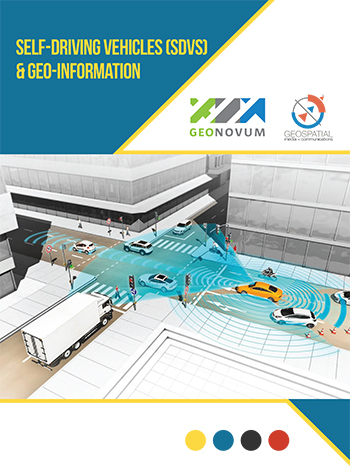Self-driving vehicles (SDVS) & Geo-information
A major transformation is happening at the global level in the transportation sector. Compared to 10 years ago, the driverless vehicle industry is growing at an accelerating rate and the geospatial industry has a crucial role to play in it. Data or geoinformation is the ‘oil’ of the driverless vehicles and is imperative to the functioning of these vehicles. Without data, autonomous vehicles won’t be a reality and would remain a distant dream. However, thanks to the dynamic involvement of geospatial industry, this dream is now becoming a reality. Geospatial technologies like LiDAR, sensors, Radar, navigation, etc., along with a whole array of geospatial technologies are driving the geospatial industry.
Key Findings
- Self-driving vehicles achieve autonomy at 4 levels. In the final level, complete automation is achieved such that the passenger only has to input the destination in the car but will not need to control the car at any time during the trip.
- Innovations for self-driving cars are happening in the digital ecosystem, the geospatial ecosystem as well as the automobile ecosystem.
- 94.7 Million Vehicles with self-driving capabilities to be sold annually around the world by 2035. Also, according to industry estimates, by 2020, the AV market will be worth $87 billion.
- Driverless vehicles do not only consume data but they act as ‘super sensors’ or ‘on the move data infrastructure’ producing vast amount of data by themselves.
- GNSS infrastructure is at the core of localisation of data and positioning of self-driving vehicles and can be used to increase safety, enhance the traffic flow and to provide public mobility.
- Vehicle to Vehicle (V2V) and Vehicle to Infrastructure (V2I) communication is becoming of paramount importance in establishing the ‘Internet of Cars’ ecosystem
- A central unification process for data standards formats and structure is needed worldwide for driverless cars.
- The key role of the government is to establish an enabling and protective legal framework while simultaneously establishing open, or interoperable and internationally oriented data policy and governance.
Autonomous Vehicles

